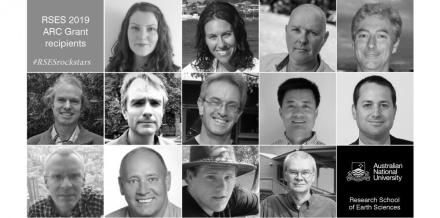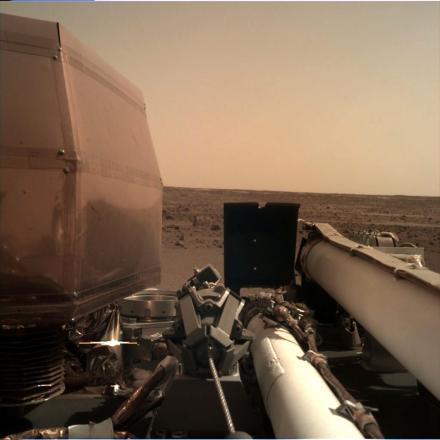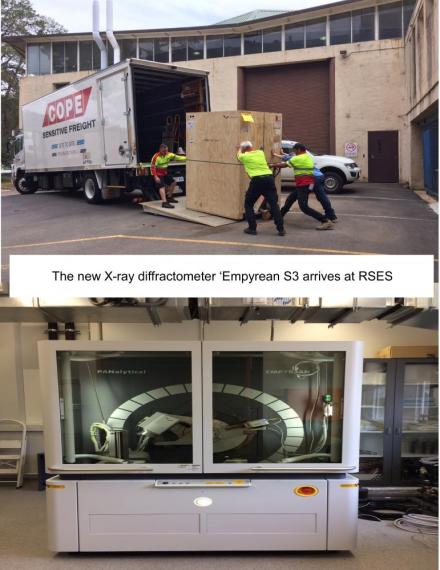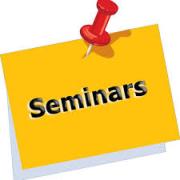|
Director's Message
Dear All,
ARC funding outcomes were announced last week. Overall, we were quite successful, with 6 RSES-led DPs, two externally led DPs, two DECRAs and one LIEF proposal all being funded. This amounted to around 30% success rate for submitted DPs and two out of six DECRAs. Congratulations to the successful applicants!(more details below).
For those of us who were not successful and who are now eligible to apply, the process for writing grants for the DP20 round now commences. The Research Office have provided a list of all RSES academics who have a DP slot open (it is nearly all of us) and each person on the list should be planning to submit a proposal in early 2019.
Drop-in proposal writing sessions will be held each Friday (Jaeger seminar room, 12 pm) starting 7 December until the final submission of proposals in January/February. Please make use of the chance to receive feedback on your proposals, to read other proposals and to gain ideas/insights into how you may be able to improve your own proposal.
The end of year party will be held this Thursday, starting at 12 pm. Tickets are available from Toni at reception.
See you all there!
Paul
|
|
Congratulations to ARC Grant Recipients!

|
|
The latest round of ARC grants was announced last week, with thirteen academics from RSES awarded nine grants: six DPs, one LIEF, and two DECRAs, with a total of $3.889m funding awarded across RSES research groups. Congratulations to all recipients.
Read more |
|
|
Heading to AGU in Washington next week?
The ANU North American Liaison Office Meet and Greet.
Director, Paul Harris, and senior projects officer, Martha Evans, invite all RSES staff attending AGU to meet at an AGU Pod space to catch up and provide an update on all sorts of science funding and policy issues that may be of interest to RSES ANU researchers.
The pod-space catch up has been reserved for Tuesday 11 Dec from 1:30 – 2:00pm
Location: Concourse Level - Outside Hall B 10 (Walter E Washington Convention Center).
For those with IODP interests. Two Union sessions will focus on IODP:
There are 194 abstracts in 76 sessions in 13 different AGU sections referencing IODP data or samples. Find them using AGU's Search utility or Browse the online Scientific Program.
The U.S. Science Support Office has compiled a useful list of sessions containing IODP-related abstracts in this Excel file: IODP Abstracts at 2018 AGU
|
|
InSight Sol 1

|
|
In this first Martian day of the mission, the Geology team of InSight found out that the lander lies in a small hollow crater, which is a sand-filled degraded basin/crater overlying older buried craters. Such sand-filled depressions are common based on experience with the Spirit rover and also orbital imagery. Bedrock in this region is thought to be about 3 m deep, with large error bars, based on analysis of nearby craters. The rocks nearby likely come from these larger craters. A big rock seen in the image is estimated to be at least 8 m away, more likely 17 m away, so the crater is at least 7 m across and likely larger than that. For now, the Instrument Context Camera (ICC) does not provide a back view. The lander is tilted about 4 degrees, suggesting maybe the back leg might be higher than the two front legs, which might indicate that this leg is on the upslope at the back edge of the crater. There are other simple plausible explanations for this (leg crush, bed forms, rocks,). Orbital imagery (Mars Reconnaissance Orbiter) will provide high-resolution images (20-30 cm) only after 3rd December, and help to constrain the crater size. A delay is to expect in the release of images because the uplink communication in the night of Wednesday were missed, for undetermined reasons. One of the post landing science activities using the SEIS seismometer will be to address the depth of the basement beneath the landing site. |
|
|
The new X-ray diffractometer ‘Empyrean S3 is here!

|
|
The new X-ray diffractometer ‘Empyrean S3’ arrived this week, replacing three older instruments and expanding the capabilities of our XRD lab. Apart from analysing standard powders, small samples and those in capillaries, we can now perform micro-XRD of small areas without interference of the surrounding matrix, using a high-brilliance beam of 50 µm+ diameter. The programmable xyz-stage permits setting up a sequence of analysis points or mapping of flat samples, with good intensity provided. Up to 45 powder samples can be loaded at once and analysed with the automatic sample changer (i.e., we can now run overnight if you are in a hurry), while individual hand-specimens weighing up to 2 kg may be loaded on a multipurpose stage. The slurry cell attachment allows the observation of crystal growth in solutions. We expect to be up and running in a week or two. Come and see Ulli Troitzsch to get your samples lined up!
The equipment was supported by Coinvestigators Penny King, Jochen Brocks and Rachel Wood at RSES, Larissa Schneider (Culture, History and Language) and Adrian Sheppard (Physics and Engineering). We are grateful for additional contributions from others in the School (Eggins, Troitzsch, Opdyke) , RSPE (Tan, Herring), CHL (Haberle), RSC (Liu), RSEng (Lipinski) the Australian Federal Police, UNSW-Canberra (Liow, Kayali), and Uni Canberra (McQueen, Hoogewerff, Moore, White). |
|
|
CPF Retreat

|
|
|
|
|
|
|

|
|
This Week's Seminars:
Student Seminar:
Jaeger 1 Seminar Room
Tuesday: 4th December
4.00pm - 5.00pm
Topic:
Speaker:
Climate and Fluid Physics Seminar
Hales Seminar Room (J7)
Tuesday: 4th December
2.00pm - 3.00pm
Topic:
Speaker:
Palaeoenvironments Seminar:
Ringwood Room
Wednesday: 5th December
12noon - 1.00pm
Topic:
Speaker:
J1 Seminar Room
Friday: 7th December
2.00pm
Topic:
Speaker:
School Seminar:
1 Seminar Room
Thursday: 6th December
1.00pm-2.00pm
Topic:
Speaker:
Petrology and Geochemistry Seminar:
Ringwood Room (J4)
Friday: 7th December
12.30pm - 1.30pm
Topic:
Speaker:
|
|

|
|
Publications
Jones, T. J., Davies, D. R., Sossi, P. A. Tungsten isotopes in mantle plumes: Heads its positive, Tails its negative. Earth Planet. Sci. Lett., 506, 255-267, doi:10.1016/j.epsl.2018.11.008, 2019.
Jaques, A.L,, Luguet, A., Smith, C.B., Pearson, D.G., Yaxley, G.M, and Kobussen, A.F., 2018. The nature of the mantle beneath the Argyle AK1 lamproite pipe: constraints from mantle xenoliths, diamonds, and lamproite geochemistry. In Davy, A.T., Smith, C.B., Helmstaedt, H., Jaques, A.L., and Gurney, J.J., (Editors), Geoscience and exploration of the Argyle, Bunder, Diavik, and Murowa diamond deposits.
Rayner, M.J., Jaques, A.L,, Boxer, G.L., Smith, C.B., Lorenz, V., Moss, S.W., Webb, K., and Ford, D., 2018. The geology of the Argyle (AK1) diamond deposit, Western Australia. In Davy, A.T., Smith, C.B., Helmstaedt, H., Jaques, A.L., and Gurney, J.J., (Editors), Geoscience and exploration of the Argyle, Bunder, Diavik, and Murowa diamond deposits. Society of Economic Geologists Special Publication Number 20, 89-117. Society of Economic Geologists, Littleton, Colorado, USA.
|
|

|
|
|

|
|
ANU offers a range of counselling services for enrolled students (undergraduate or postgraduate) who might be experiencing a range of difficulties around mental health, stress, motivation, social anxiety and so on. For more information, visit:
http://www.anu.edu.au/students/health-wellbeing/counselling
In addition to the group programs and workshops they also offer confidential counselling services for individuals. If you have concerns about the welfare of any of your students, please consider directing them towards this service. |
|

|
|
|

|
|
Congratulation to Dr Catherine A. Vreugdenhi for winning the Uwe Radok award for her thesis entitled "The effects of convection in geostrophic circulation: insights into ocean heat transport and energy budget".
The 2018 Meyers Medal has been awarded to Dr Adele Morrison. Dr Morrison is a highly productive research scientist who has made significant contributions to the field of Southern Ocean dynamics and its impact on the climate and ecosystem. Congratulations winners. |
|
|
The 20th Australian Organic Geochemistry Conference (AOGC) - Origins of oil, old organics and organisms

|
|
RSES in collaboration with Geoscience Australia, will host this year’s Australian Organic Geochemistry Conference (AOGC), to be held at the Finkel Theatre, John Curtin School of Medical Research, ANU from 3–7 December 2018.
Details about AOGC 2018, including information about how to register and submit abstracts, are now available on the conference website:
http://www.ga.gov.au/news-events/conferences/australian-organic-geochemistry-conference
|
|
|
|